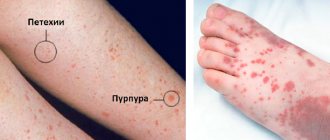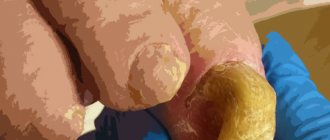From this article you will learn:
- what is periodontitis - symptoms, photos,
- anti-inflammatory therapy regimen,
- modern methods of treating periodontitis.
The article was written by a dentist with more than 19 years of experience.
Periodontitis is an inflammatory disease of the gums, which is accompanied by increasing destruction of the attachment of teeth to the bone tissue and soft tissues of the gums, which over time leads to tooth mobility. Periodontitis can appear in the area of only 1-2 teeth - in this case it is called localized, or it can be generalized (in the area of most teeth).
Most often, patients consult doctors with chronic generalized periodontitis, in which the gums of almost all teeth are inflamed. As a rule, most of these patients have a long history of self-medication of sore and bleeding gums (ie, symptoms of catarrhal gingivitis). Moreover, it is ineffective treatment or no treatment at all for gingivitis that leads to its gradual transformation into generalized periodontitis.
Periodontitis: generalized (Fig. 1) and localized (Fig. 2-3)
The causes of the localized form of periodontitis are local traumatic factors. This could be an overhanging edge of a filling or an artificial crown that injures the gums in the interdental space. The reason may also be “premature contacts” between the upper and lower teeth, which can appear either from natural causes or if the filling on the chewing surface or the crown is made a little higher than necessary.
Another common reason is when a dentist, when restoring a damaged tooth with a filling, incorrectly forms a contact point between the teeth in the interdental space. The lack of tight contact leads to constant food getting stuck in the interdental space and the development of inflammation. In the localized form (as opposed to the generalized form), symptoms of periodontitis occur only in teeth exposed to the traumatic factor.
Dental periodontitis - what is it?
Periodontium refers to the whole complex of tissues responsible for tooth retention: connective fibers, blood vessels, periodontium, gums, canals and jaw bone. Periodontitis is an inflammation of the gum tissue, which quickly affects the rest of the complex. As a result, the dentogingival connection is disrupted and the tooth falls out. Periodontitis is a very common disease that affects more than 95% of the world's inhabitants in various stages: from the rudimentary form of periodontitis to advanced, untreatable.
It is believed that most often the pathology manifests itself in men and women aged 30 to 40 years and in adolescents 16-18 years old. However, the disease can affect anyone, regardless of gender and age, if you do not monitor the condition of your oral cavity and postpone a visit to the dentist. Periodontitis can be treated only in the early stages; when it becomes chronic, no dentist, even the most modern, can cope with it, since the tissues have undergone irreversible changes.
Preventive measures
The most effective measure to prevent the onset of the disease is regular brushing of your teeth - twice a day, for at least two minutes. It is also recommended to rinse the mouth with special solutions after each meal. Brushing your teeth should always start from the upper jaw, first from the front and then from the back. It is important to use a soft toothbrush (or electric), gentle toothpaste and mouthwash.
If there is unevenness in the dentition, it is recommended to get braces or dentures at a young age.
Proper nutrition is also a preventative measure. It involves limited intake of carbohydrates and sweets, which lead to the development of the inflammatory process. It is recommended to add a lot of fruits and vegetables to your diet, which are rich in vitamins and microelements.
A healthy lifestyle, exercise, lack of stress, and an annual dental consultation minimize the risk of developing acute periodontitis.
Etiology of periodontitis
Periodontitis can be caused by various factors.
- Microbes.
The oral cavity of any person is inhabited by pathogenic microorganisms that do not cause harm if proper nutrition and hygiene are observed. But, if the patient constantly consumes carbohydrates and neglects to use dental floss, bacteria actively develop and gradually affect the enamel, dentin and reach the periodontal tissues. - Genetic predisposition.
If for many generations all family members have suffered from this disease, there is a high probability of adopting this predisposition. Heredity plays a big role in the development of gum periodontitis, even if a person carefully monitors hygiene and eats right. - Mechanical damage to the gums.
Tissue bruise due to negligence, an incorrect bite, in which increased pressure is applied to a specific area of the gum, or an oversized filling, due to which the tooth puts increased pressure on the gum and damages it. - Systemic diseases.
Dental diseases and periodontitis can cause pathologies not related to the oral cavity, such as vegetative-vascular dystonia, HIV, diabetes mellitus, hypertension and gastrointestinal diseases. - Autoimmune diseases.
Reduced immunity, disruption of the endocrine system, hormonal imbalances during pregnancy. - Poor quality dentist work.
Tissue damage during treatment, an unsuitable crown, incorrectly installed braces and other tissue injuries due to the fault of the doctor can provoke periodontitis.
Among the given factors are microbial causes of the development of periodontitis, and microbes are known to be transmitted from one person to another. So is periodontitis contagious? No, directly, for example, by airborne droplets or through saliva, it is impossible to become infected with the pathology, and every person has microbes that provoke the disease - even if periodontitis bacteria are transmitted from a sick person to a healthy person, the microbes will not develop without additional favorable circumstances: poor oral hygiene, gum injuries, predisposition or concomitant diseases.
Causes of the disease
Periodontitis is considered a polyetiological disease - it is formed in most cases by a combination of several predisposing factors. Activation of the inflammatory process is provoked by external and internal factors, systemic and local disorders of the body. The causes of periodontitis are divided into two large groups: endogenous and exogenous.
Endogenous causes of periodontitis:
- diseases of the digestive tract;
- some types of vitamin deficiencies, especially lack of ascorbic acid;
- endocrinopathies - diabetes mellitus, hypothyroidism, thyrotoxicosis;
- vascular diseases;
- bruxism.
Some researchers describe a hereditary predisposition to periodontitis, but it has not yet been fully proven.
Exogenous causes of periodontitis:
- plaque and tartar - found in approximately 90% of patients with periodontitis;
- pathogenic microorganisms;
- chronic dental injuries associated with malocclusion;
- Iatrogenesis - consequences of improper dental treatment, for example, non-compliance with prosthetic technology;
- basal caries;
- gum recession;
- the absence of several teeth - the formation of periodontitis in this case is associated with a violation of the distribution of chewing load.
The causes of periodontitis in most cases act in combination: a combination of several factors leads to disruption of microcirculation in the area of the periodontal junction. Then an infection occurs, which intensifies the inflammatory process. The impact of waste products of microorganisms on bone tissue is accompanied by its resorption (resorption), which leads to a weakening of the fixation of teeth in the jaw. If left untreated, the symptoms of periodontitis continue to worsen and ultimately lead to edentulism.
Symptoms of periodontitis in adults and children
Typically, the signs of periodontitis vary depending on the stage of development of the disease, but there are also general symptoms characteristic of the entire period of pathology:
- unpleasant constant bad breath, plaque and tartar are associated with the active activity of bacteria;
- bleeding and brighter gum color due to tissue inflammation;
- increased sensitivity of teeth, pain when chewing;
- thick viscous saliva;
- swollen lymph nodes;
- headache, weakness and lethargy.
Splinting procedure for periodontitis
The need for splinting in the treatment of periodontitis arises when there is mobility of more than 2-3 dental units in a row. Splinting helps strengthen teeth and also helps to quickly eliminate inflammatory processes in soft tissues.
Splinting can be carried out in different ways. A specialist can use fiberglass tapes in manipulations, install welded dental crowns or a clasp denture. The method of splinting is selected based on the clinical picture of a particular case.
Stages of periodontitis
With each stage, dental periodontitis develops more strongly. Unfortunately, most often patients consult a doctor already with a severe form of the disease.
Mild periodontitis
There is bleeding of the gums when brushing teeth, small periodontal pockets up to 3 mm deep, slight swelling of the gums and discoloration - the tissues look loose and slightly blue. The initial stage is almost painless and can be treated in just a couple of visits to the dentist.
Moderate periodontitis
The gums bleed almost constantly, and small purulent discharge appears. Gum pockets enlarge and expose the roots of the teeth, and the interdental spaces widen. The patient feels the tooth bursting and increased pressure on the gum tissue. It is difficult to cure moderate periodontitis, but it is quite possible if you make an effort and follow the doctor’s instructions.
Severe periodontitis
The gums are completely weakened, the tissues are loose, there is no swelling. Severe tooth mobility and even tooth loss. Bone tissue with severe periodontitis becomes thinner and atrophies. The entire complex is affected - ligaments, muscles, periodontal tissues and blood vessels, and nutrition of the tooth stops. The only thing a specialist can do at this stage is to relieve gum inflammation and recommend tooth extraction for prosthetics.
The danger of periodontitis: why it occurs and how to treat it
Table of contents
- Periodontitis – what is it?
- Causes of periodontitis
- Symptoms and complications
- Classification
- Severity of periodontitis
- Forms of periodontitis
- Types of periodontitis by degree of localization
- Diagnosis of periodontitis
- How to treat periodontitis?
- Preventive measures
- Advantages of treatment at MEDSI
Periodontitis is a common dental disease that affects about 90% of the adult population of the planet. Just like caries, it leads to tooth loss. But while almost everyone knows about the dangers, causes and prevention of caries, periodontitis still remains a little-known disease for many.
Periodontitis – what is it?
Our teeth are surrounded by what is called periodontium. It consists of gums, blood vessels, connective and bone tissue. The periodontium provides nutrition to the hard tissues of the tooth and the alveolar process (the part of the jaw in which the tooth sockets are located). And it holds the tooth tightly in its place.
Periodontitis is an infectious inflammation of the periodontium. Most often it is preceded by gingivitis, in which the surface of the gum becomes inflamed. Bleeding and discomfort appear. With periodontitis, inflammation penetrates deeper, and symptoms may intensify.
If the disease is not treated, it progresses to periodontal disease, in which bone tissue is destroyed and teeth begin to fall out.
Causes of periodontitis
Periodontitis is caused by bacteria. And those factors that create a favorable environment in the oral cavity for their nutrition and reproduction are the cause of this disease. These include:
- Poor oral hygiene.
After eating, food particles remain in the spaces between the teeth, in the gum pockets (the depression between the gum and the tooth tissue). This is an excellent breeding ground for bacteria to grow. And the less often or carelessly we brush our teeth, the greater the chance of developing inflammation. - Tartar.
Every day, plaque, a biofilm of bacteria, forms on our teeth. Having hardened, it forms tartar, which provokes inflammation of the tissues adjacent to the tooth. - Injury to the gums
by hard food, a poorly fitting filling or crown, a hard toothbrush, etc. Wounds are a favorable environment for pathogenic microorganisms
Factors contributing to the development of periodontitis also include:
- Untreated dental inflammation (they spread to nearby tissues)
- Weakened immunity due to vitamin deficiency, poor nutrition, constant stress
- Smoking and chewing tobacco
- Hormonal imbalances
- Reduced amount of solid food in the diet and, as a result, bone tissue atrophy
- Genetic predisposition
Symptoms and complications
The insidiousness of periodontitis is that most often it proceeds calmly, without pain.
. His symptoms are unpleasant, but not disturbing enough to rush to the hospital. And during a routine dental check-up, they often even forget to mention them. Therefore, the disease is not treated for years until it becomes advanced.
Be sure to see a doctor if you notice at least one of the following signs
:
- Gums bleed when brushing teeth
- You have bad breath that does not go away after rinsing or brushing your teeth
- The gaps between teeth have increased
- Some areas of the gums are bright red
- A gap has appeared between the tooth and gum - a “pocket”
- Enamel has become sensitive to cold and hot
- There is a permanent yellow coating on the area of the tooth adjacent to the gum
- The teeth seemed to become thinner at the base, lengthened
- Pus comes out of the gum pockets
- You feel pain when chewing and brushing your teeth
Initiating a disease is dangerous. Over time, inflammation destroys tissue, periodontal pockets enlarge, teeth no longer adhere to them and eventually fall out - even healthy ones, untouched by caries.
Classification
To choose the right treatment strategy, the doctor determines the type of periodontitis. The disease is classified according to severity, severity, and localization.
Severity of periodontitis
Depending on the severity of periodontitis, there are:
- Mild degree
, when a person is
only bothered by bleeding and discomfort
while brushing his teeth. At this stage, no more than a third of the tooth root is destroyed, and the depth of periodontal pockets is up to 3 mm - Medium degree
, in which the pockets deepen up to 6 mm, and degenerative (destructive) processes affect up to half of the tooth root.
The patient at this stage notices that the teeth begin to loosen - Severe degree
, during which the appearance of the dentition changes - the interdental spaces increase, the roots of the teeth are exposed.
Gum pockets enlarge and become centers of purulent inflammation as food gets into them. More and more periodontal tissue is destroyed, teeth begin to fall out
Forms of periodontitis
Based on severity, the disease is divided into acute and chronic forms.
Acute periodontitis
usually accompanied by severe pain at the site of inflammation, the appearance of purulent abscesses (abscesses), and the formation of fistulas through which pus comes out. Possible fever and general weakness. There is only one plus - with the acute form they often go to the doctor and begin treatment for periodontitis, which usually prevents its transition to a severe advanced stage.
Chronic form
Periodontitis in the early stages manifests itself mainly only by bleeding gums and bad breath. Almost nothing bothers the patient, but in the meantime the periodontal tissues become inflamed and destroyed. The hidden form is most common.
Types of periodontitis by degree of localization
According to the degree of distribution, they are distinguished:
- Local form
, when only a separate area is affected - Generalized form
, when the pathological process covers a large periodontal area
Diagnosis of periodontitis
First, the doctor needs your detailed description of the problem. In the early stages, even an experienced dentist may not notice the disease - there are almost no external signs. And based on your complaints, he will definitely prescribe additional studies.
To correctly diagnose the disease and determine its severity, the dentist uses:
- Oral examination
- X-ray or computed tomogram - to assess the condition of periodontal tissues and tooth roots
- Rheoparodontography, in which a weak current is passed through periodontal tissue. It is used to study the tone of blood vessels in the area under study. The more severe the stage of periodontitis, the more negative changes in the circulatory system the study determines
- Ultrasonic osteometry, which assesses the degree of destructive changes in bone tissue
- Schiller-Pisarev test, when the oral cavity is treated with a special solution. Affected and healthy tissues after treatment have different color intensities
- Determination of the bleeding index
- Determination of periodontal index
- Microbiological studies of the oral cavity - to determine the type of pathogenic microorganisms that caused inflammation
- Clinical tests of urine and blood - to identify factors contributing to the development of periodontitis, as well as the general condition of the body
A set of diagnostic measures helps determine the causes, severity of the disease, and the extent of its spread. Additional studies help determine contraindications and features of the use of therapy. As a result, the doctor makes an informed decision about treatment methods.
How to treat periodontitis?
Modern methods make it possible to cure even severe forms of periodontitis. But it will not be possible to restore already destroyed tissues in any case. That is why periodontitis should not be allowed to progress to a severe form.
The treatment regimen for periodontitis usually includes:
- Elimination of sources of infection
. Sanitation of the oral cavity is carried out: treatment of carious teeth, removal of tartar, cleaning of periodontal pockets - Regular thorough oral hygiene
. The dentist explains to the patient how to brush their teeth correctly and how often. Recommends medicated toothpastes and rinses - Destruction of bacterial infection
in periodontal tissue. Usually the fight is carried out both at the local level (antibacterial ointments, applications, rinses) and at the systemic level - antibiotic injections or tablets are prescribed - Strengthening the immune system
with multivitamin complexes, mineral supplements, immunomodulatory drugs - Correction of bite
, incorrectly installed crowns or fillings that caused inflammation - General strengthening, restorative therapy
for periodontal tissues using physiotherapeutic procedures and medications - Correction of damaged tissues and dentition
in advanced cases. Surgical methods are used here
Let's look at what procedures and medications are used to treat periodontitis.
- Ultrasonic, hardware or laser cleaning of tartar and gum pockets
- Rinsing the mouth with antiseptic preparations
- Treatment of gums with antiseptic, antibacterial ointments and gels
- Physiotherapeutic procedures - UHF, electrophoresis, ultrasound, gum massage, balneotherapy and so on
- Dental splinting is a surgical operation in which teeth are held together with a special tape to prevent them from falling out.
- Flap surgery in which a flap of gum is cut away and periodontal pockets are opened and cleaned out. The flap is then sutured into place to cover the exposed roots and strengthen the gum.
- Augmentation of destroyed bone tissue and other surgical interventions
Traditional methods of treatment can only be used in combination with therapy prescribed by a doctor, and only with his approval. By themselves, they most often are not able to cope with periodontitis.
Preventive measures
Treatment of periodontitis is a complex process. Therefore, it is best to prevent its development. Prevention measures include:
- Regular dental examinations
(at least twice a year) - Thorough and proper brushing of teeth
. The brush should be of medium hardness, the brushing movements should be directed towards the cutting edge of the teeth, the duration of the procedure should be at least 5 minutes - Regular professional dental cleaning
in the clinic - Rinsing the mouth after eating
- Regular use of dental floss or irrigator
- Including solid foods in your diet
, which improves blood supply to the gums and jaw bone tissue, and also naturally cleanses plaque from teeth - Be careful with the
oral mucosa and prevent injury to it - Maintaining good overall body tone, strengthening the immune system
- Timely replacement
of missing teeth - Regular gum massage
is a simple procedure that you can do yourself. To do this, just massage your gums with your fingers for 5-10 minutes (after washing your hands) - Timely treatment of common diseases
Advantages of treatment at MEDSI
The MEDSI clinic network offers professional diagnosis and treatment of periodontitis using modern methods, as well as preventive measures, such as professional cleaning of plaque and tartar.
The advantages of contacting us are:
- Comprehensive consultations
. Often the problem affects several areas of dentistry, for example, therapy and prosthetics. In this case, your doctor will definitely invite related specialists for a consultation. - Drawing up a transparent and detailed financial treatment plan ,
which will help you plan expenses and give you the opportunity to “freeze” prices for services - Comfort
. Comfortable waiting areas and reception rooms, the use of modern diagnostic and treatment technologies give you a feeling of comfort throughout your stay in the clinic - Excellent technical equipment
. Our clinics can carry out all the necessary diagnostic examinations, including cone beam computed tomography. All equipment is from leading European manufacturers - Possibility of treatment during sleep
, using gentle medical sedation (anesthesia). This treatment will help to completely avoid discomfort and carry out extensive work in a short time.
You can be sure that in our clinics you will receive an accurate, comprehensive diagnosis, prescribe the correct treatment and carefully monitor its effectiveness.
Forms of periodontitis
Types of periodontitis are classified into groups according to different criteria.
By place of development:
- localized - a small lesion affecting only one tooth, and sometimes part of the tooth, for example the root; most often occurs due to mechanical damage to tissue;
- generalized - the damage spreads to a group of teeth, gum and bone tissue, so it seems that half of the jaw hurts; A common cause is the development of bacteria and reduced immunity.
According to the nature of the course:
- acute - pain during periodontitis occurs suddenly, symptoms develop rapidly;
- chronic - advanced periodontitis of the acute stage becomes chronic, pain and other symptoms practically disappear, but the disease continues to progress and destroy tissue.
Why you can’t install removable and bridge dentures against the background of advanced periodontitis
Loss of bone tissue and widening of the sockets during periodontitis create a very ambiguous situation: on the one hand, long-term conservative treatment in the later stages is rarely effective, on the other hand, prosthetics are also difficult, and the problem of missing teeth needs to be solved. However, not every treatment method is suitable.
Why are dental bridges not suitable?
Teeth with periodontitis are weakened and are on the verge of falling out; it is strictly forbidden to use them as support for a denture. The bridge will be movable along with the teeth on which it is attached. The risks are high, even if complex and long-term treatment was carried out before.
Why are removable dentures not suitable?
In fact, after a course of treatment for periodontitis (or closer to the middle of it after acute inflammation has resolved), removable dentures can be installed to solve the problem of partial absence of teeth. But only for a short time, because... When used long-term, they lead to many problems:
- do not stop bone atrophy, but only aggravate this process,
- put increased pressure on the gums and can provoke inflammation, which is extremely undesirable during the course of therapy,
- will require regular correction, since during treatment the damaged tissues are restored, which means the level of the bone with the gum will change - the dentures will no longer fit tightly, will shift, dangle,
- if teeth are partially missing, there is nothing to attach them to - as in the case of bridges, it is better not to use living teeth for support, especially if they are mobile,
- if the teeth are removed scatteredly, then removable dentures will not work at all; the minimum segment is 2-3 missing teeth in a row.
That is, removable dentures can provoke the development of periodontitis and negate all the results of a course of complex treatment. In addition, they are difficult to get used to - more than half of patients are not satisfied with them either in aesthetics or functionality.
Exacerbation of periodontitis
The disease does not occur in isolation; periodontitis affects the condition of the entire organism. Even if the pathology has passed from an acute form to a chronic one and it seems to the patient that the pain has gone away and the illness has receded, the destructive effect of the inflammatory process still continues. And the advanced chronic stage can not only worsen, but also cause severe complications of periodontitis:
- osteomyelitis - inflammation of bone tissue;
- abscess and phlegmon - the formation of abscesses and the spread of pus through the tissues;
- lung diseases - pathogenic bacteria from the oral cavity enter the lungs when breathing;
- pathologies of the heart and blood vessels - a long-term inflammatory process affects the functioning of the heart.
What complications can there be?
Doctors consider periodontitis one of the most difficult diseases of the oral cavity, largely due to possible complications. Untimely treatment can lead to damage to the respiratory tract and endocrine system, and the appearance of cardiac pathologies. The inflammatory process leads to the formation of cytokines, which, when entering the body, interfere with insulin production. This becomes the cause of diabetes.
Periodontitis also affects the cardiovascular system, increasing the risk of stroke and heart attack. The disease can provoke enterocolitis, an imbalance of microflora in the intestines, and gastritis.
Diagnosis of periodontitis
Diagnostics includes a visual examination to determine the presence of problems and analysis of complaints to make a preliminary diagnosis. Then the patient is sent for additional examination:
- orthopantomogram - a circular image of the entire jaw;
- X-ray - X-ray of periodontitis on a specific tooth using a targeted image;
- periodontogram - measuring the depth of periodontal pockets;
- urine and blood analysis - determination of infections and diseases in the body.
The symptoms of the disease are similar to those of other dental pathologies; the doctor’s task is to make an accurate diagnosis for effective treatment.
- With periodontal disease, there is no bleeding, swelling of the gums and periodontal pockets, there is no inflammation, since the main cause is age-related changes, diabetes mellitus and cardiac dysfunction. Read more about periodontal disease in a separate article.
- With gingivitis, periodontal pockets and tooth mobility are not observed, there is no exposure of the roots, and inflammation affects only the gum tissue. Find out about the symptoms of the disease here.
- Stomatitis is accompanied by plaque on the tongue and ulcers on the mucous membrane, bleeding and inflammation of the gums, tooth mobility and exposure of the roots are absent. About the types and signs of the disease in a separate article.
What is the difference between periodontitis and periodontal disease?
Periodontal disease is a disease that is accompanied by the destruction of bone tissue and does not lead to inflammatory processes. These diseases differ in the nature of treatment, causes, frequency of occurrence, etc. Periodontal disease occurs in no more than 3% of the population, develops with diabetes mellitus or due to a hereditary factor, and is sluggish (periodontitis is more intense).
With periodontal disease, the gums very rarely bleed, their swelling is not observed, the process of development of the disease always covers the entire dentition. Periodontitis can be focal or widespread.
Treatment of periodontitis
Treatment of periodontitis in the early stages consists of removing plaque and tartar, cleaning periodontal pockets and drug therapy: local treatment of tissues with anti-inflammatory drugs, taking antibiotics and strengthening the immune system.
Moderate to severe disease requires complex therapy for periodontitis. In addition to sanitation of the oral cavity and taking medications, it includes splinting teeth to keep them from moving, surgery to remove pus and affected tissue, consultation with a therapist, immunologist and gastroenterologist to prevent relapse; in the case of an advanced form of the disease - examination by a prosthetist and subsequent restoration of lost teeth using crowns. Read more about the treatment of periodontitis in our article.
Dentists always aim to preserve the patient’s natural teeth, but in cases of severe periodontitis, often the only solution is tooth extraction. You shouldn’t let your oral cavity reach this state; seeing a doctor at the first symptoms of the disease gives you a 100% chance of recovery—the early stages of periodontitis can be treated quickly and without complications. And regular visits for preventive examinations completely exclude the occurrence of any dental diseases.
Treatment of the disease with modern devices
One of the most effective methods of treatment are the drugs from the Solnyshko company - OUFv-02 and OUF-10-2. These are ultraviolet quartz irradiators that have vitamin-forming and immunostimulating properties. The drugs will help relieve inflammation, eliminate post-traumatic injuries, and relieve pain. The manufacturer also produces ultraviolet irradiators for other purposes; more details about the range can be found in the Catalog.
OUFv-02 and OUF-10-2 are equipped with an integrated radiation spectrum that operates in the range from 240 to 320 Nm. This is enough to eliminate symptoms not only in localized, but also in generalized periodontitis, when all soft tissues are affected. The devices stimulate the process of regeneration of damaged areas of the body and have a disinfecting effect.
Devices from are widely in demand in medical institutions, sanatoriums, and preventive centers. Can be used at home for the whole family. OUFv-02 and OUF-10-2 also treat other diseases - tonsillitis, rhinitis, pharyngitis, influenza and ARVI.
Prevention
Is it possible to avoid inflammation in periodontal tissues? Of course, and in most cases, careful hygiene and regular professional cleaning at the dentist are sufficient for prevention. It is also worth eating more solid foods - fresh vegetables, fruits, nuts. Such food gives the gums the necessary chewing load, promotes self-cleaning of teeth and supplies the body with valuable microelements. However, an additional course of dietary supplements containing calcium, fluoride and vitamin B will also not be superfluous. And of course, you shouldn’t put off correcting your bite, replacing missing teeth and treating caries. Then the likelihood of developing chronic periodontitis will be minimal.










